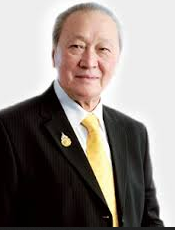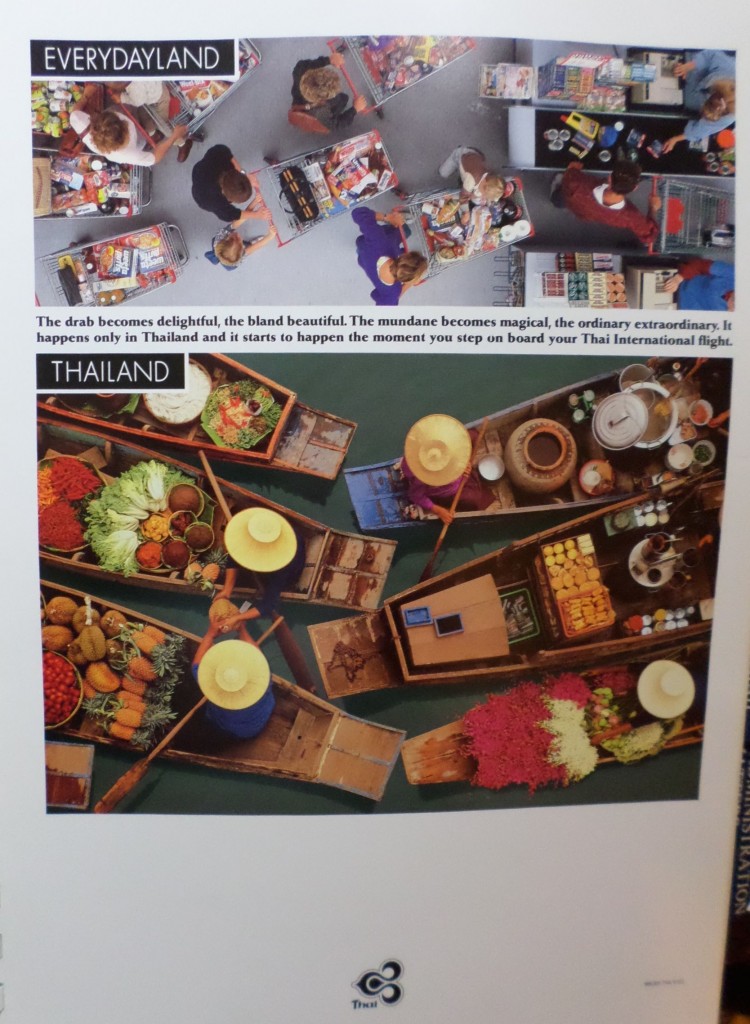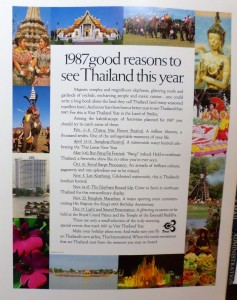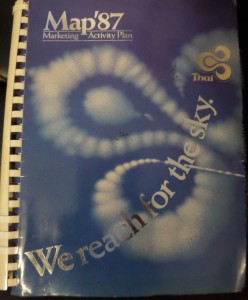
19 Apr, 2015
In memoriam: Thai tourism and aviation pioneer Chatrachai Bunya-ananta
One of Thailand’s most eminent aviation and tourism pioneers, Mr. Chatrachai Bunya-ananta, the first civilian to become President of Thai Airways International, passed away on April 18 at the age of 82. Ailing for several months with a blood infection, he had been in and out of hospital since December 2014.
Mr. Chatrachai was one of a core team of Thai Airways executives who put the Thai tourism industry and the national airline on the map in the 1980s by promoting Bangkok as the aviation hub of Asia, after the advent of the long-range, widebody jets gave Bangkok the competitive advantage of becoming the first point in Southeast Asia to be reached by non-stop, full-load flights from Europe.
The other core team members were Capt Jothin Pamon-Montri, VP Flight Operations; Capt Chusak Bhachaiyudh (VP-Technical); Niels Lumholdt (VP Corporate Planning and Industry Affairs); Mrs Chitdee Rangvara (Director of Public Relations); Henrik Lau (Director of Sales); and Thamnoon Wanglee (VP Finance). Mr Lumholdt passed away in August 1999.
 |
 |
 |
 |
Under their command, Thai Airways was at its peak in the 1980s. Copenhagen became the European hub and new flights were launched to Kathmandu, Bali, New Caledonia, Tehran, Baghdad and many more exotic destinations.
With strong support from the then Prem Tinsulanonda government in 1986, Mr. Chatrachai also ensured the success of the 1987 Visit Thailand Year campaign which catapulted Thailand’s tourism industry to new heights in the year commemorating the auspicious 5th cycle 60th birthday of King Bhumibhol Adyulyadej.
Although the Visit Thailand Year idea was conceptualised by the Tourism Authority of Thailand and senior executives of the Thai private sector, in those days, the TAT had nowhere near the marketing and distribution network nor the budgets of Thai Airways.
Then Executive Vice President, Mr. Chatrachai oversaw a marketing budget of 4,355 million baht in fiscal 1986/87, its highest operational expense that year, well above the flight operations budget of 4,351 million baht, and 19.7% higher than the 3,537 million baht spent on marketing in the previous fiscal year (the baht was worth 25 to the dollar then).
The stunning campaigns saw advertising slogans like “1987 Good Reasons To See Thailand This Year”. Another “Everdayland/Thailand” ad juxtaposed exotic scenes in Thailand with parallel scenes of dull, mundane “everydayland” (as perceived to exist in the cities of the targetted tourist-generating markets).
In spite of this and other eye-popping marketing campaigns, product improvements, network expansion and superb media-savvy events such as the annual Marketing Activity Plan, all building on the geographical advantage of Thailand and its tourism assets, the team was never able to realise the airline’s full potential.
This was largely due to the convoluted ownership and administrative structure of Thai which was then under the financial control of the Finance Ministry, the administrative supervision of the Ministry of Transport and Communications and the chairmanship and presidency of the Air Force.
Mr Chatrachai and other team members were constantly at loggerheads with the revolving-door appointees of Air Force chiefs and Ministry of Transport bureaucrats over everything from aircraft purchases to internal management reshuffles. The political infighting and drain on productivity, which worsened after the 1988 merger of Thai Airways with the domestic airline TAC, was one of the main reasons why Thai Airways never eclipsed Cathay Pacific and Singapore Airlines at the top of aviation league tables.
Mr. Chatrachai graduated in 1966 from the University of Wales, UK, with a degree in Economic and accountancy. After a brief stint with the Royal Thai Police, he joined THAI in 1971 as Deputy Director of Marketing, and quickly rose to Director of Marketing. After several years as VP Marketing, he was promoted to Executive Vice President in October 1984.
He became the airline’s first civilian President in 1992 after the then administration of Prime Minister Anand Panyarachun engineered an ouster of the Air Force from enjoying its sinecure postings in the airline’s management and administrative hierarchy. He served a little more than one year in that job before retiring in September 1993.
Over the years, he represented Thai Airways on many international travel industry councils, boards and associations. He is survived by his wife Shirley, two daughters and one grandchild.
He was one of Thailand’s most affable, media-friendly and charismatic travel personalities, with excellent public-speaking skills and a delightful sense of humour. The entire Thai travel industry, especially the emerging younger generation, owes him a huge debt of gratitude.
Prayers are being held at 7 pm daily from April 20 to 26 at Sala 10 of That Thong Temple, 1325 Sukhumvit Road (near Ekamai BTS station), Bangkok.



Liked this article? Share it!